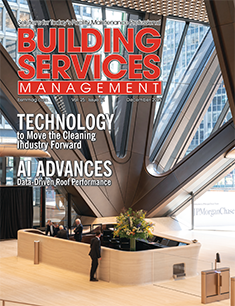December 2025
 |
Inside the December Issue |
The Role of PCR in Sustainable Packaging
BY RICCARDO BALDUCCI
Sustainability goes beyond disposal; it’s about considering the environmental impact at every stage of a product’s life cycle. While many companies are making strides by recycling and cutting down on waste, there’s untapped potential in rethinking the materials used in everyday items, such as packaging. One overlooked aspect? The poly wraps around toilet paper and paper towel products.
What is PCR?
Post-consumer recycled (PCR) plastic is
made from items people recycle every day,
like plastic bottles and newspapers. Instead
of ending up in a landfill or the
ocean, this material is processed and
reused to make new products. Using PCR
can reduce energy consumption by at least
79 percent and greenhouse gas emissions
by at least 67 percent. By incorporating
PCR plastic into packaging, companies
can help divert plastic waste from oceans
and landfills while reducing the need for
virgin plastic, which requires a significant amount of fossil fuel to produce.
Why It Matters in
Product Packaging
Soft tissue products like toilet paper and
paper towels are often wrapped in protective
plastic for shipping and storage. Traditionally,
this wrap has been made from
virgin plastic, which is a petroleum-based,
single-use and nonrenewable material. It
can also contain harmful chemicals that
may leach into the environment, posing
risks to ecosystems.
Today, many forward-thinking manufacturers
are increasing the recycled content
of these wraps. The PCR plastic
wraps provide the same durable, protective
packaging, but now with a reduced
environmental impact.
For facilities focused on meeting their
Environmental, Social and Governance
(ESG) goals, purchasing products packaged
in recycled content is a simple, actionable
way to support sustainability
efforts and reduce emissions. Full story »
today's news
Historic Hotels’ Top Gingerbread Displays Listed
WASHINGTON -- Historic Hotels of America, the official program of the National Trust for Historic Preservation for recognizing and celebrating the finest historic hotels in the U.S., has named the top 25 Historic Hotels of America Gingerbread Displays list.
BSCAI Welcomes 40 New Members
CHICAGO, IL -- Building Service Contractors Association International (BSCAI) is proud to welcome over 40 new members, companies who actively contribute to commercial cleaning industry.
TR Chem Sale to FBC Complete
DALLAS -- Generational Group, a mergers and acquisitions advisor, has announced the sale of TR Chem Solutions, a formulator of coatings and cleaning products, to FBC Chemical Corporation.
Environmental Concerns Are Critical in CRE
DENVER -- In commercial real estate, environmental problems can turn a promising investment into a costly lesson. For buyers, sellers, lenders, and investors, understanding how to identify and manage these risks can mean the difference between a profitable closing and a failed transaction.
MaintainX Joins Waites Sensor on Machine Health
CINCINNATI -- Waites Sensor Technologies and MaintainX, developers of AI-powered predictive maintenance solutions, are partnering to advance machine health insights with real-time work execution and intelligence, enabling faster and more informed responses to equipment issues.






